Asus Transformer Pad Infinity Review
Asus Transformer Pad Infinity
Is this the best Android tablet in the world?
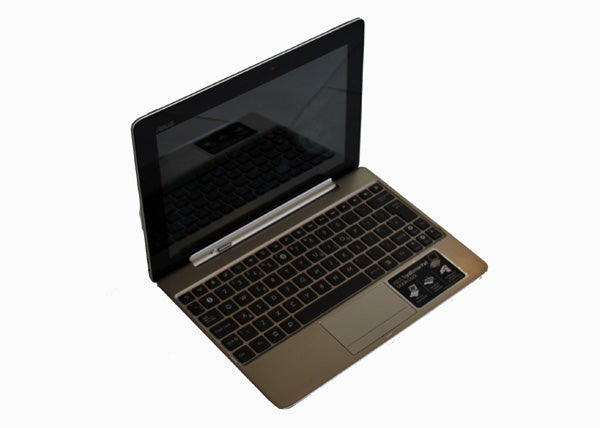
Verdict
Pros
- Fantastic screen
- Powerful
- Superb build
- Long battery life
Cons
- Expensive
- A little bit of occasional lag/judder
- So-so internal speaker
Key Specifications
- Review Price: £599.99
- Quad-core Tegra 3 1.7GHz processor
- Android Ice Cream Sandwich software
- 32GB internal memory
- 10.1in 1,900 x 1,200 pixel Super IPS+ screen
Asus makes some of the most interesting tablets in existence. They’re not identikit copies of some other manufacturer’s kit, instead offering something different. The Transformer Pad Infinity, like its predecessors, has a fantastic keyboard add-on that skyrockets the tablet’s battery life into the stratosphere and makes it a dream to type away on.
Design
But what has changed since the Transformer Prime, a very similar-looking tablet? The Transformer range has gotten even more high-end, with a quad-core processor and ultra-high resolution screen. Packing-in such impressive specs has also ensured that it’s far from cheap to buy, though. With the keyboard dock – an essential add-on – the 32GB edition costs around £600. What really shows-up the cost is the Infinity’s cheaper cousin, the Asus Transformer Pad 300.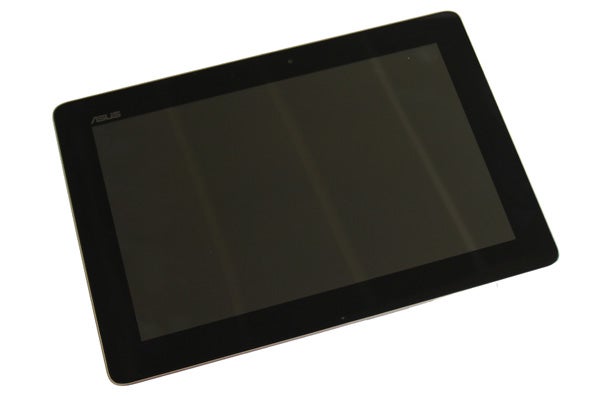
The difference in build is unmistakable, though. The Asus Transformer Pad Infinity is made from aluminium, making it feel just as expensive as, well, it is. Its lid is finished in a pattern of subtle concentric circles, and the inside with a brushed finish – Asus calls it “spun metal”. 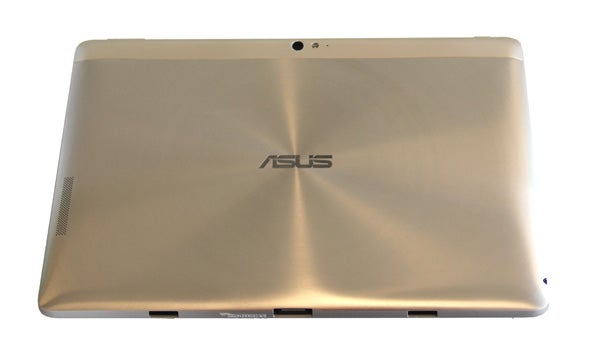
Two finishes are available, “Amethyst Gray” and “Champagne Gold”. And both look the business. The front is topped with ultra-tought Gorilla Glass 2 – not scratched or smashed too easily.
So classy is the look that it’s a pity Asus has had to tone it down a bit since the days of the Prime. At the top of the rear is a strip of plastic that’s home to the camera lens, the power button and the volume rocker – the Prime’s back was a single piece of metal. Why has Asus stepped off the design accelerator pedal? The Prime had GPS and Wi-Fi reception issues due to the design of its bod, and this plastic strip should fix all that. 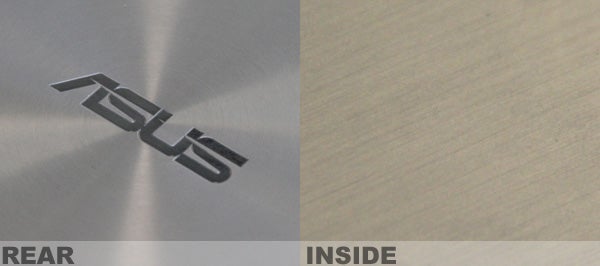
Aesthetically, it’s a shame, though, as the tablet part’s shell is otherwise a single piece of metal. And knowing the reasons for the strip, the variance in finish doesn’t look too hot.
Specs
You get more than just a fancy design for your six hundred quid. The Asus Transformer Infinity uses the Tegra 3 T33 processor, a higher-end version of the quad-core chip seen in the Pad 300, which runs at a higher clock speed than the Prime. In order to keep Android ticking along nicely with such a high-res screen, the Infinity’s Tegra 3 chip runs at up to 1.7GHz.
There’s 1GB of RAM under the hood, and the tablet comes in 32GB and 64GB flavours – no messing about with 16GB models here. Memory is expandable here too.
Connectivity and Keyboard Dock Design
On the tablet part, there is a microSD slot carved into the metal body, and next to it a microHDMI video output. The USB connector is non-standard – a proprietary jack sits on the bottom edge of the Infinity – but this is easier to forgive than usual as it forms part of the keyboard dock hinge. 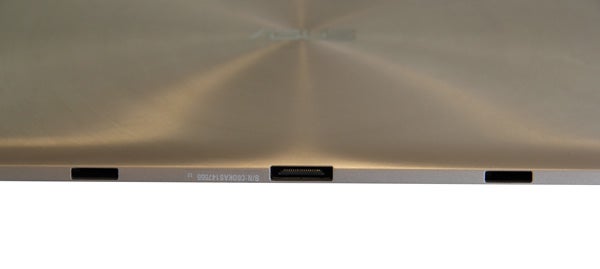
Unlike the vast majority of tablets with keyboard attachment, the Transformer Infinity’s one works just like a laptop. The hinge is a high-quality thing too, with enough strength to hold its position as long as it’s about 30 degrees open or more. 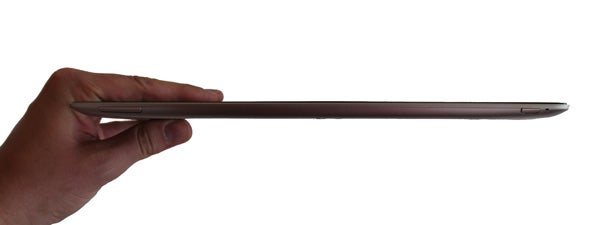
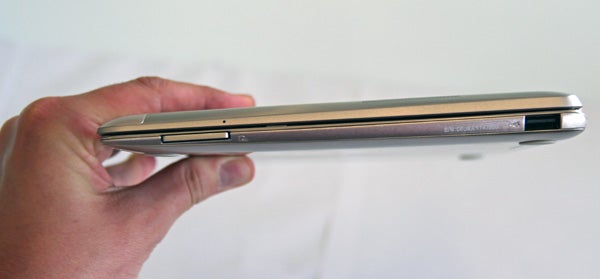
It’s a supremely elegant solution. With the keyboard attached the Infinity is still only around an inch thick – the tablet alone is a delightfully slim 8.5mm. And for all the metal on show, it weighs just 599g. It’s a little heavy for prolonged one-handed use, but 10.1in tablets don’t get a good deal lighter than this. With the keyboard attached, the whole bundle weighs 1.14kg, which is around the same weight as a netbook. Not bad, eh?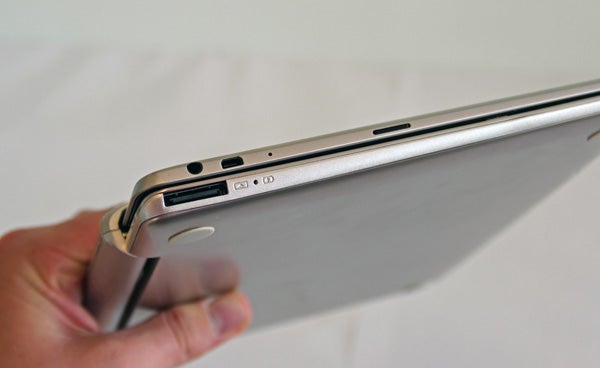
The keyboard also adds to the Transformer Pad Infinity’s connectivity. There’s a full-size USB port, letting you plug in a mouse or external hard drive with ease, and a full-size SD card slot. On the other edge is the same sort of proprietary connector that sits on the tablet’s bottom – to let you charge the Infinity while it’s in its laptop-like state.
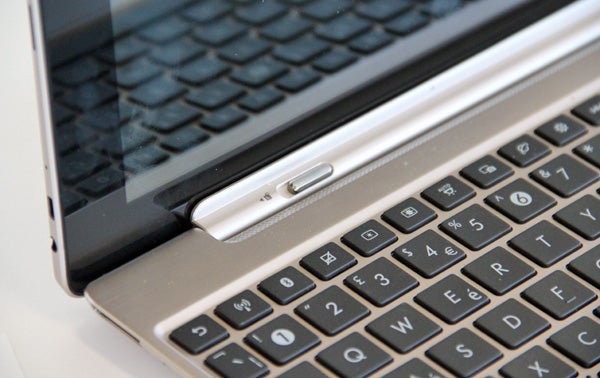
The switch here “unlocks” the keyboard-tablet connection
Keyboard Quality
With a full Qwerty keyboard – minus the numerical pad – and a small trackpad, the Asus Transformer Pad Infinity offers a pretty similar typing experience to a teeny laptop or netbook. Just like the Prime before it, the keys are high-quality and offer a good, crisp action – if a little shallow. There is, predictably, no backlight.
The keyboard makes the Infinity a good replacement for an on-the-go laptop expected to perform basic productivity tasks. However, we’d stop short of recommending it as something to use in place of a full-size 15.6in or larger laptop. Its small size is generally a huge plus point, but to use at home for a mix of work and play, consider an Ultrabook.
Battery Life
The Asus Transformer Pad Infinity’s keyboard module features its own battery to just-about double the tablet’s stamina, but battery life from the tablet part alone is respectable. We left it playing a video on loop with wireless switched off and brightness set to 50 per cent and it lasted for almost dead on eight hours.
Attach the keyboard and this will be boosted to over 14 hours, making the Transformer once again a king of Android tablet stamina. However, it is slightly less than the original Prime managed, thanks to the demands of the additional screen pixels here. The keyboard battery’s lot in life is to keep the main battery charged, and will start feeding it once attached, ensuring you’ll be able to disconnect and carry on using if you fancy, at any time.
Wireless Connectivity
At present, just the Wi-Fi only version of the Pad Infinity is available. There is a 3G version on the way, but it’ll cost a significant chunk more – and the Wi-Fi edition isn’t exactly cheap to start with.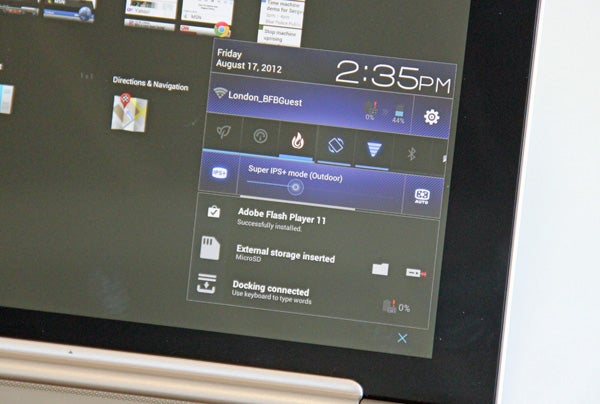
Other than this, the tablet is well-specced in terms of wireless connectivity. The inbuilt Wi-Fi n offers Wi-Fi Direct, letting two compatible devices talk to each other without any actual internet connection. There’s also Bluetooth 3.0 and GPS, but no NFC. It’s not a terrible loss in a large tablet like this, but the next twelve months should see some interesting innovations within this standard.
NFC stands for Near Field Communication and will let you buy things on the high street with little more than a swipe of the device over a sensor. As such, it’s much better suited to smartphones – swiping a 26cm long tablet over a till is not going to look elegant.
Screen
The main upgrade the Infinity offers over the Prime is an improved screen. Resolution has been bumped up from 1,280 x 800 pixels to 1,920 x 1,200. With pixel density of 224dpi, it’s not quite as packed as the new iPad – which offers 263dpi – but the effect is much the same at normal viewing distances. Text and images look incredibly sharp, and you have to try very hard to see any signs of the underlying pixel structure – you need to push your eyeball right up against the glass front.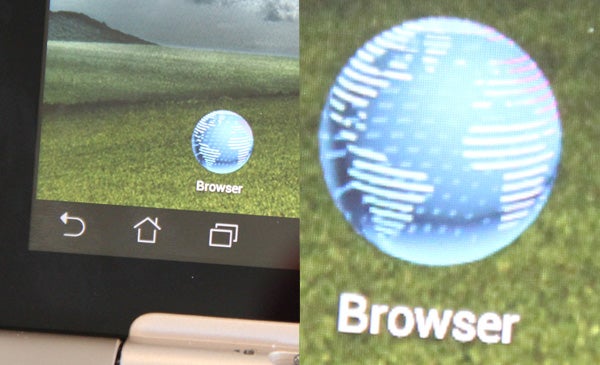
A number of tablets this year will offer this resolution, though, including the much cheaper Acer A700. What’s less common is the Super IPS panel type used in the Pad Infinity. Maximum brightness is quite incredible, and normal brightness levels are well down the brightness slider scale. There’s an automatic brightness setting on hand if you want the tablet to take care of business. It uses a sensor up by the user-facing camera to judge ambient light levels.
The “plus” of the IPS refers to a brightness-boosting mode designed for outdoors use – with super-shiny screen finishes tablets generally struggle with reflections when used out in the sun. Max out the brightness and flip on mode and you should have no problems. It’s only really designed for these situations, though, as it will naturally chomp away at the battery and reduces contrast a little.
Used in “normal” mode, contrast is excellent and colours are deep and vivid, but with a natural tone that’s superior to the often oversaturated tones of rival AMOLED displays. Tablet screens don’t get any better than this, yet.
Video
Such a wonderful screen should make the Transformer Pad Infinity the perfect portable movie theatre. The keyboard module comes in handy here too, letting you rest the tablet on your knees easily when on the train.
Inbuilt codec support is pretty respectable as well. Although Windows warned us that the files were not designed to work on the tablet, most of our video test files played back just fine using the integrated Gallery app, all apart from a fairly challenging 1080p x264 MKV sample – including DivX, Xvid and a number of MKVs. 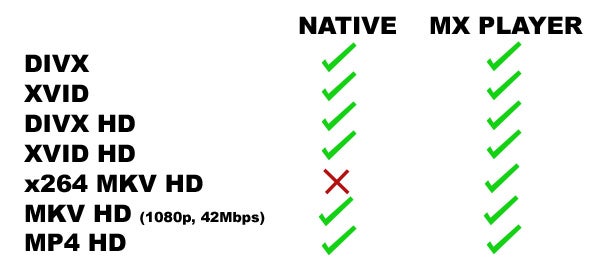
Switching to a third-party video player app that supports software rendering we were able to play all our samples at full speed. The Tegra 3 T33 chip powering the Infinity has much more power on tap than the Tegra 2 of the original Transformer, which famously had trouble handling video files. 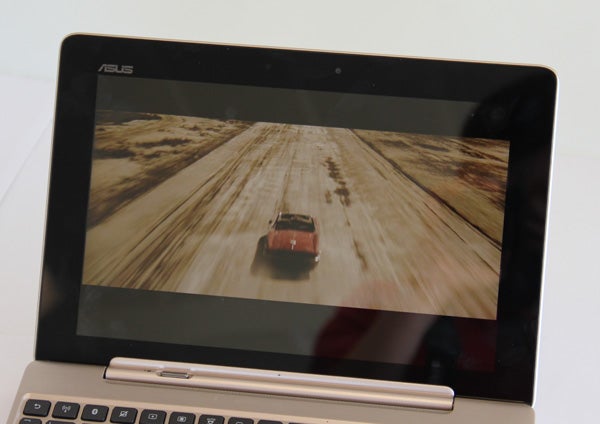
You will ideally want to download a separate media player, though, as there isn’t a proper video player app here beyond the Gallery – also home to photos.
Software and Performance
Gallery is a generic Android app, and for the most part Asus has let the Android OS be. The Transformer Pad Infinity runs Android Ice Cream Sandwich, with just a few tweaks and changes.
The icons on the nav bar are a little different, for one, and there are more controls on the pop-up Settings bar. Asus lets you pick between three power modes here – Power Saving, Balanced and Performance. These alter the behaviour of the CPU, making it work as hard as possible in the Performance mode. The Power Saving mode also seems to alter the screen contrast to reduce the rate of juice drain. In our battery test, we kept the tablet on Balanced mode.
To test quite how marked the difference between the modes is, we tried a few benchmarks. In the Power Saving mode, the Infinity attained 5815 points in the AnTuTu benchmark, which rocketed up to 13597 in Performance mode. The difference is, in a word, massive. The lower score would be typical of a dual-core tablet, demonstrating the Tegra 3 processor’s impressive versatility. A run through the SunSpider Javascript bench resulted in a score of 2226ms using the stock browser (1380ms with Chrome), which is a way behind the new iPad but solid among Android devices. 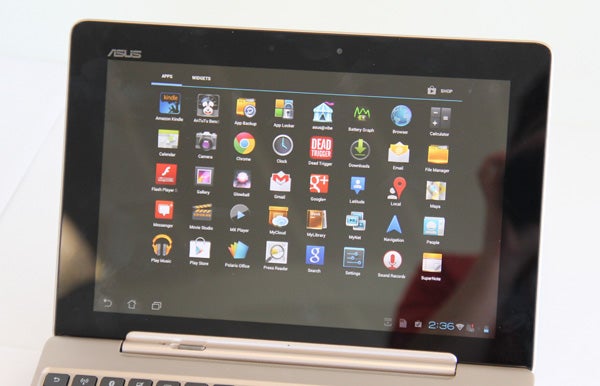
There are clear compromises in using the lower settings in day-to-day use. Just flicking around the Android interface shows clear – and rather surprising – lag at times in Power Saving mode, which may be in part down to the sheer number of pixels the tablet has to render. Just over 2.2 million, if you’re wondering. Even in Performance mode, there’s a little jerkiness to screen transitions at times.
This should hopefully be alleviated once the Transformer Pad Infinity is upgraded to Android Jelly Bean 4.1, thanks to its more intensive use of processing power across the system. It should arrive within a few months of the tablet’s release.
Pre-installed Apps
Asus hasn’t as drastic changes to Android in the Transformer Pad Infinity as, say, Samsung has with its TouchWiz UI, but it does offer a handful of pre-installed apps. Most are not essentials.
App Backup lets you easily move apps to an SD card, App Locker lets you password protect some or all of your apps – a handy way to keep the kids out of things they shouldn’t be touching. Asus@Vibe is a half-hearted apps, books and music store from Asus. It seems a little pointless when Google Play is right by it on the apps menu. 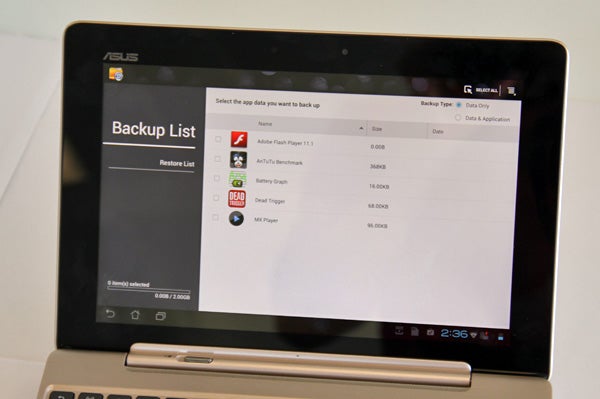
Other preinstalled apps are more useful. MyCloud is an app that lets you access your Asus Cloud-stored files, and as a Transformer user Asus gives you 8GB of storage to play with.
MyNet is a neat-looking DLNA interface. DLNA uses a Wi-Fi connection to stream media between compatible devices. As there’s an HDMI video output on the tablet, there are other ways to get video piped out to a TV, but it’s good to have a wireless option on-hand.
Last, but perhaps the most useful of the lot, is Polaris Office. This has been used in Transformer tablets since the beginning of the series, and lets you create and edit Microsoft Office documents. As perhaps the best Android tablet for doing actual work on, an Office suite like this is a must-have.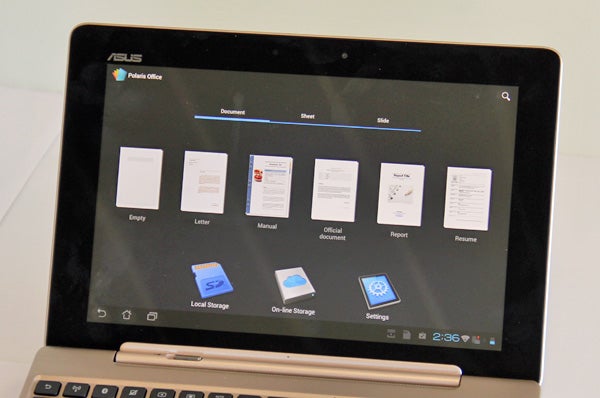
Want more? The Asus Transformer Pad Infinity has full access to the Google Play app store and its hundreds of thousands of apps, and both the 32GB and 64GB editions have plenty of room for hundreds of the things.
However, as yet not a great many apps have been optimised for the “ultra resolution” screen.
Games
Due to the Tegra 3 processor used in the Pad Infinity, games support is relatively good. The tablet comes with the Tegra Zone games portal, which acts as a showcase for games optimised for Tegra 2 and Tegra 3 devices. It’s a hall of flashy 3D games, basically. 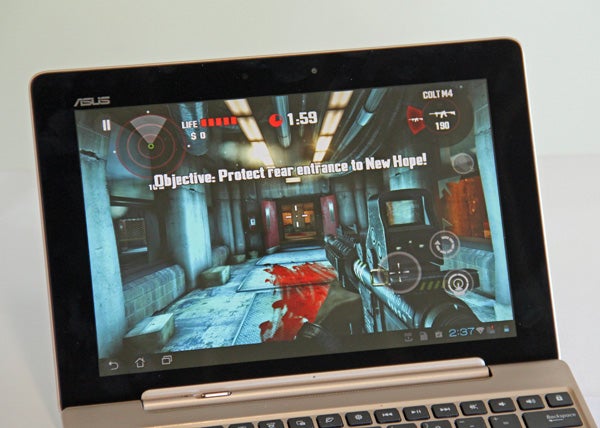
There were 49 downloads available at the time of writing. Yes, it’s not an endless treasure trove of entertainment, but it is very useful as a way to circumvent all the garbage of the Google Play app store.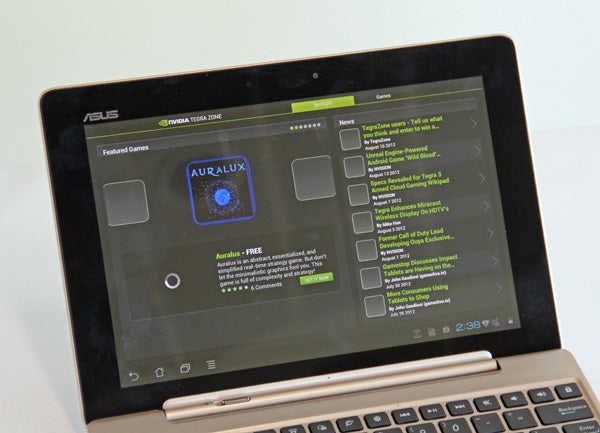
How good are Tegra 3-grade graphics? They’re impressive, comparing pretty well to the best the iPad has to offer – partly because pretty most of the Tegra Zone games are available on iPad too, and they represent some of the Apple tablet’s prettiest picks. When you’ve run out of Tegra 3 games, there are dozens – if not hundreds – of games worth checking out in the Google Play store.
Internal speaker
To add some drama to your games and movies, there’s an internal speaker, whose grille is drilled into the metal rear of the tablet. Firing away from you and with a mono driver rather than a stereo one, speakers are clearly not much of a priority, and it shows.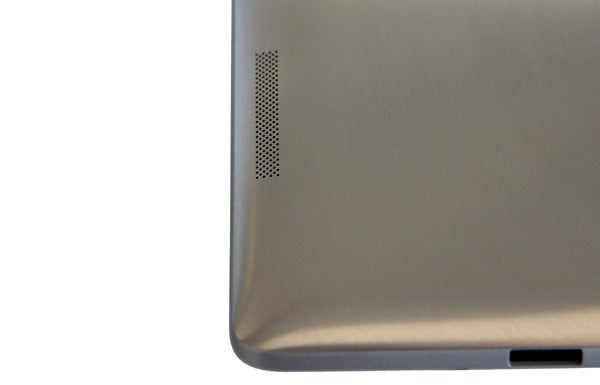
The sound is not ugly or distorted, but doesn’t go hugely loud and doesn’t have much warmth or low-end presence – a bit thin. Our tip is to use external speakers or headphones for a proper movie session.
Web Browsing
As it runs Android Ice Cream Sandwich rather than Jelly Bean, the Asus Pad Transformer Infinity comes with the stock Android web browser – Google switched to Chrome in the Jelly Bean edition os the OS. However, Asus has thoughtfully installed Chrome too for good measure. It’s another sign that Asus likes to cater for the enthusiast.
Chrome is the better of the two, with a more attractive interface and the ability to easily hook-up with the info stored in desktop versions of the browser. It’s also a lot faster, having thrashed stock Android in the Javascript SunSpider benchmark.
Cameras
As feature-complete as the Prime, the Asus Pad Transformer Infinity has two cameras, one in the centre of the plastic strip on the rear, and one a little off-centre in the front screen surround. Let’s start with the rear one.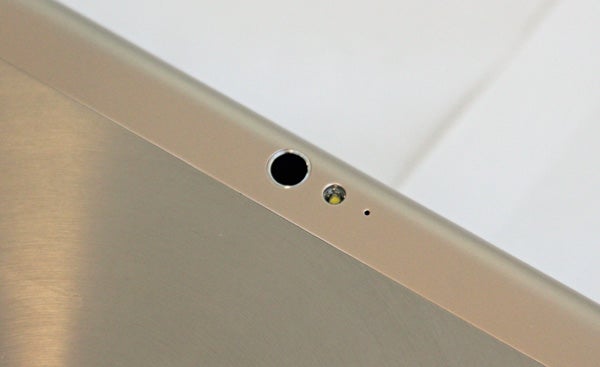
It uses a 8MP sensor, and has an LED flash for low light photography. It’s also equipped with a good number of features. There’s touch focusing, manual ISO, a panorama mode and the usual selection of scenes, exposure compensation settings and white balance modes.
Video fares even better, including the fun face-distorting active effects that arrived alongside Ice Cream Sandwich. And unlike some tablets, the Pad Infinity can grab video at 1080p resolution.
Photos captured are a little noisy and look sharpened, but are surprisingly good for a tablet, when tablet cameras often appear to be little more than afterthoughts. Pick the right mode to shoot in and colours are pretty accurate and vivid, with a good amount of detail rendered. Well done, Asus.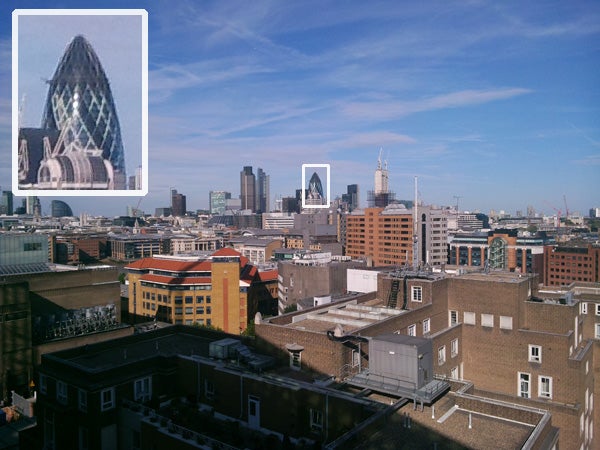
Close-up performance isn’t great, though. The Infinity often struggles to focus on anything closer than 20-30cm away.
Although the front camera is rather more basic, it’s a good example too with solid motion handling and decent colour reproduction. It’s a 2MP sensor that can capture 480p video, and can also make use of the fun distortion effects of Android. 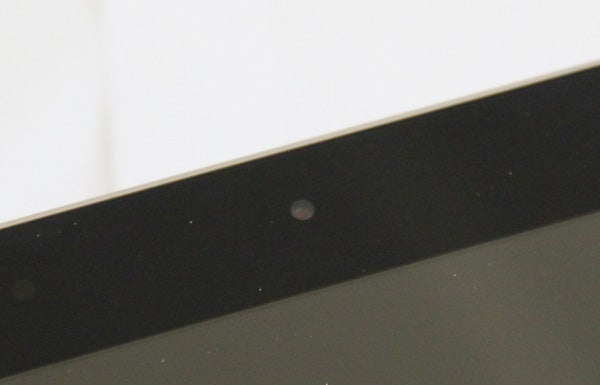
Value
Now that Asus has released its own low-cost model in the Transformer range, the Pad 300, the Infinity absolutely seems like an ultra-premium option. It costs £600, which is £200 more than the 32GB Pad 300.
Can the Infinity possibly be worth the extra? Well, you do get a fair bit for your money – a much higher-resolution screen, a metal bod and a faster processor. For the less picky, the 50 per cent price increase will be just too much. Even the previous top dog Transformer Prime is a full £120 less these days.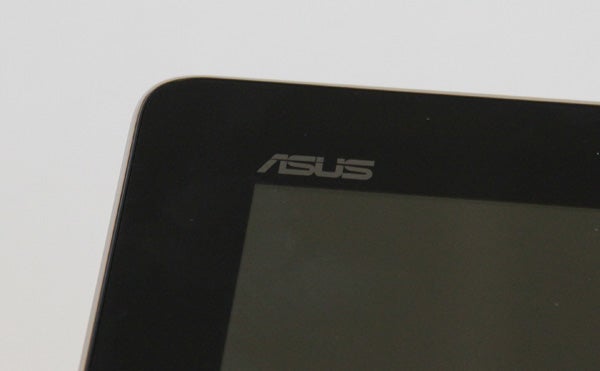
However, until the Lenovo IdeaTab S2110 reaches our shores, the Transformer troupe is the only bunch of keyboard-ed Android tablets we can wholeheartedly recommend.
Verdict
The Asus Transformer Pad Infinity is a fantastic Android tablet. It has tweaked the design of its predecessor the Prime, upped the clock speed and shot the screen’s pixel count into the stars. There’s very little to dislike about this tablet, even if it does trade in a few hours of battery life for its upgrades. The price is high but, for now at least, it justifies the premium.
How we test tablets
We test every tablet we review thoroughly. We use industry standard tests to compare features properly and we use the tablet as our main device over the review period. We’ll always tell you what we find and we never, ever, accept money to review a product.
Trusted Score
Score in detail
-
Performance 8
-
Value 8
-
Design 9
-
Screen Quality 10
-
Features 9
-
Battery Life 9
Other
| Processor | Tegra 3 T33 |
| Memory (RAM) (Gigabyte) | 1GB |
| Weight (Gram) | 600g |
| Camera (Megapixel) | 5 Megapixel |
| Front Facing Camera (Megapixel) | Yes Megapixel |
| Mobile Broadband/3G | No |
Display
| Resolution | 1920 x 1200 |
| Display Size (Inch) | 10.1in |


